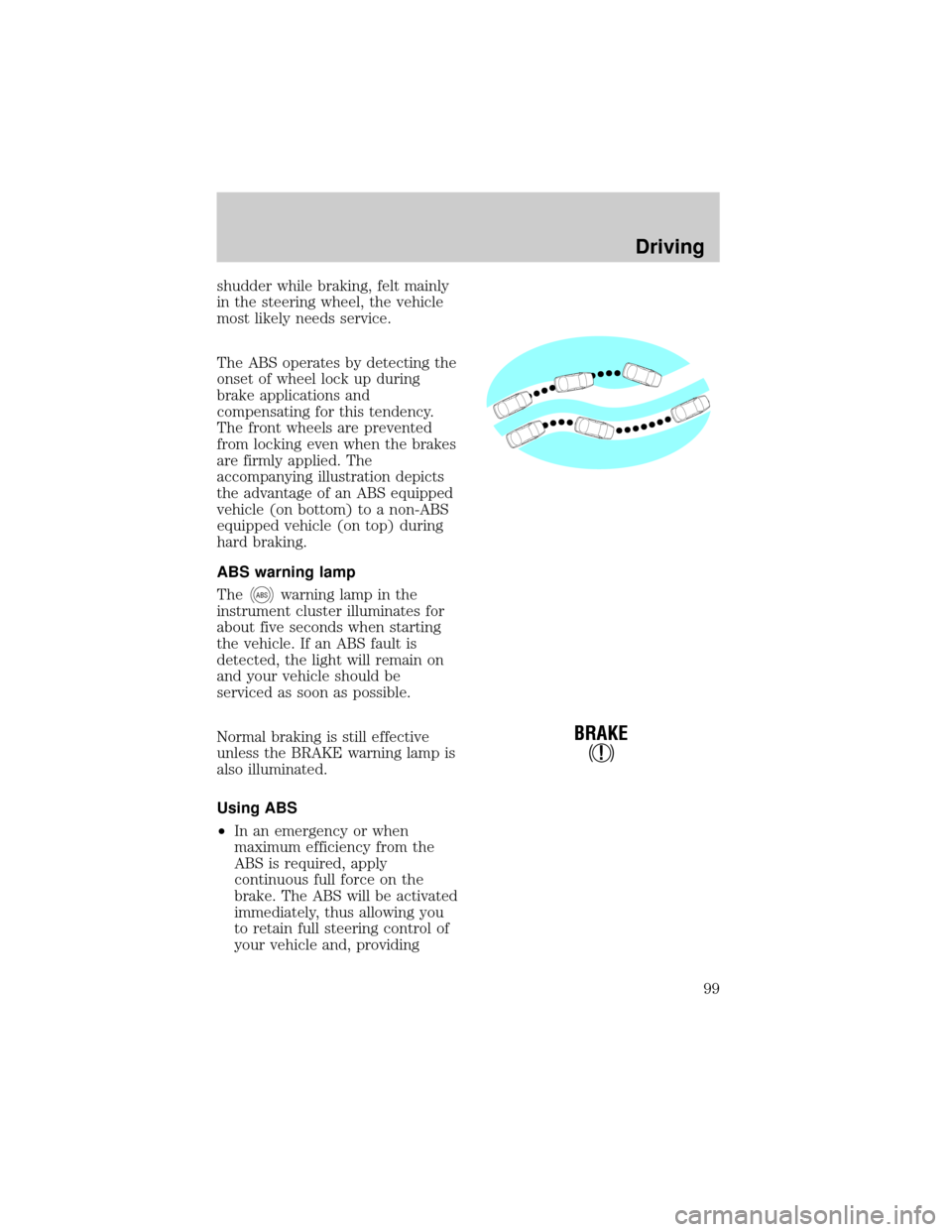Page 3 of 216
contents without notice and
without incurring obligation.
SPECIAL NOTICES
Using your vehicle as a
snowplow
Do not use this vehicle for
snowplowing.
Using your vehicle as an
ambulance
Do not use this vehicle as
an ambulance.
Your vehicle is not equipped with
the Ford Ambulance Preparation
package.
Notice to owners of utility type
vehicles
Before you drive your vehicle,
please read this Owner's Guide
carefully. Your vehicle is not a
passenger car. As with other
vehicles of this type, failure to
operate this vehicle correctly may
result in loss of control or an
accident.
Be sure to readDriving off road
in theDrivingchapter as well as
the ªFour Wheelingº supplement
included with 4WD and utility type
vehicles.
Introduction
3
Page 11 of 216
oil pressure gaugein this chapter
for more information.
Four wheel drive low
(if equipped)
Illuminates when four-wheel drive
low is selected.
Four wheel drive indicator
(if equipped)
Illuminates when 4x4 range is
selected.
Automatic four wheel drive
indicator (if equipped)
Illuminates when A4WD
(automatic 4±wheel drive) is
engaged.
Check air suspension
Illuminates momentarily when the
ignition is turned to the ON
position and the engine is OFF.
The light also illuminates when the
air suspension system requires
servicing.
For information on the air
suspension system, refer to the
Drivingchapter.
LOW
RANGE
4x4
A4WD
CHECK
SUSP
Instrumentation
11
Page 23 of 216
4WD CONTROL (IF EQUIPPED)
This control operates the
Control-Trac 4WD. Refer to
Control trac automatic
four-wheel drive systemin the
Drivingchapter for more
information.
AUDIO SYSTEM
Refer to the ªAudio Guideº for
instructions on how to operate the
audio system.
CLIMATE CONTROL SYSTEM
Manual heating and air
conditioning system
Fan speed control
Controls the volume of air
circulated in the vehicle.
Temperature control knob
Controls the temperature of the
airflow inside the vehicle.
4H
2HA4WD4L
HI
COOL WARM
OFFPANELFLOOR
DEFFLR
& DEF A/C
MAX
A/CPANEL &
FLOOR
LO
HI LO
COOL WARM
Controls and features
23
Page 32 of 216
POSITIONS OF THE IGNITION
1. ACCESSORY, allows the
electrical accessories such as the
radio to operate while the engine
is not running.
2. LOCK, locks the steering wheel,
automatic transmission gearshift
lever and allows key removal.
3. OFF, shuts off the engine and all
accessories without locking the
steering wheel.
4. ON, all electrical circuits
operational. Warning lights
illuminated. Key position when
driving.
5. START, cranks the engine.
Release the key as soon as the
engine starts.
TURN SIGNAL CONTROL
²Push down to activate the left
turn signal.
²Push up to activate the right
turn signal.
3
1
2
5
4
Controls and features
32
Page 37 of 216
To return to a previously set
speed
²Press RES/RSM/RESUME. For
RES/RSM/RESUME to operate,
the vehicle speed must be faster
than 48 km/h (30 mph).
TILT STEERING
Pull the tilt steering control toward
you to move the steering wheel up
or down. Hold the control while
adjusting the wheel to the desired
position, then release the control.
Never adjust the steering
wheel when the vehicle is
moving.
RES
SET
ACCEL
COAST
Controls and features
37
Page 80 of 216
Do not place objects or
mount equipment on or
near the air bag cover on the
steering wheel or in front seat
areas that may come into contact
with a deploying air bag. Failure
to follow this instruction may
increase the risk of personal
injury in the event of a collision.
Do not attempt to service,
repair, or modify the Air
Bag Supplemental Restraint
System or its fuses. See your
Ford or Lincoln-Mercury dealer.
Children and air bags
For additional important safety
information, read all information
on safety restraints in this guide.
Children should always wear their
safety belts. Failure to follow these
instructions may increase the risk
of injury in a collision.
Air bag can kill or injure a
child in a child seat. If you
must use a forward-facing child
seat in the front seat, move seat
all the way back.
Seating and safety restraints
80
Page 99 of 216

shudder while braking, felt mainly
in the steering wheel, the vehicle
most likely needs service.
The ABS operates by detecting the
onset of wheel lock up during
brake applications and
compensating for this tendency.
The front wheels are prevented
from locking even when the brakes
are firmly applied. The
accompanying illustration depicts
the advantage of an ABS equipped
vehicle (on bottom) to a non-ABS
equipped vehicle (on top) during
hard braking.
ABS warning lamp
The
ABSwarning lamp in the
instrument cluster illuminates for
about five seconds when starting
the vehicle. If an ABS fault is
detected, the light will remain on
and your vehicle should be
serviced as soon as possible.
Normal braking is still effective
unless the BRAKE warning lamp is
also illuminated.
Using ABS
²In an emergency or when
maximum efficiency from the
ABS is required, apply
continuous full force on the
brake. The ABS will be activated
immediately, thus allowing you
to retain full steering control of
your vehicle and, providing
!
BRAKE
Driving
99
Page 101 of 216
The parking brake is not designed
to stop a moving vehicle. However,
if the normal brakes fail, the
parking brake can be used to stop
your vehicle in an emergency.
Since the parking brake applies
only the rear brakes, the vehicle's
stopping distance will be adversely
affected.
Pull the release lever to release
the brake. Driving with the parking
brake on will cause the brakes to
wear out quickly and reduce fuel
economy.
STEERING
Your vehicle is equipped with
power steering. Power steering
uses energy from the engine to
help steer the vehicle.
Never hold the steering wheel to
the extreme right or the extreme
left for more than a few seconds
when the engine is running. This
action could damage the power
steering pump.
Speed sensitive steering
The steering in your vehicle is
speed sensitive. At high speeds,
BRAKE
HOOD
Driving
101